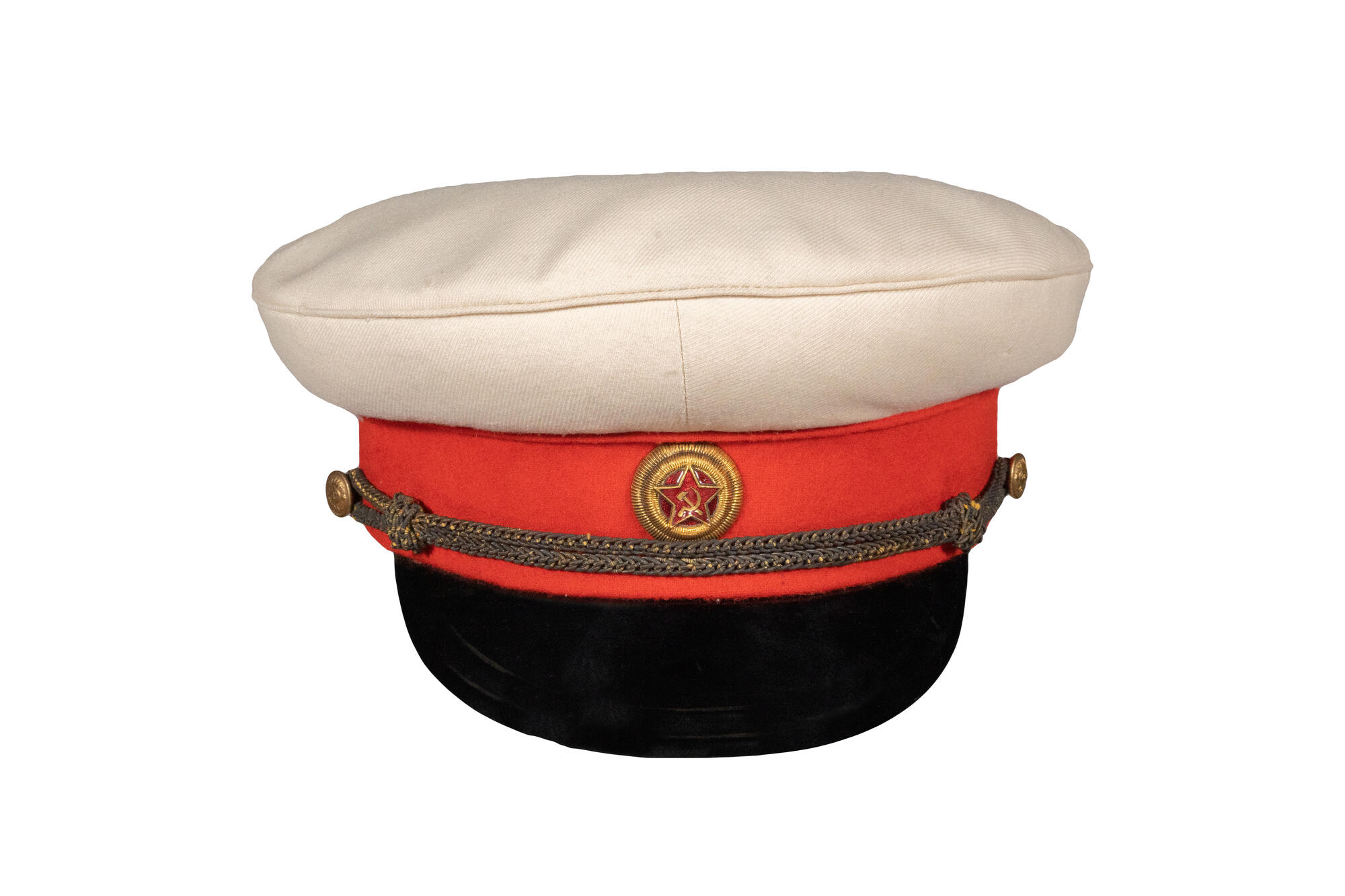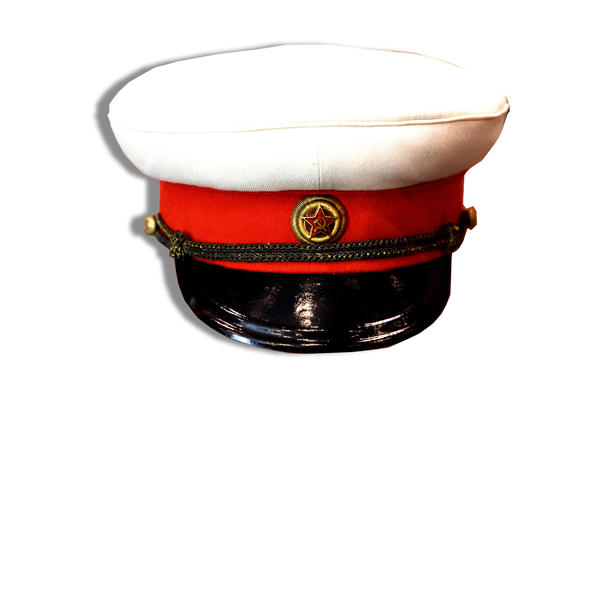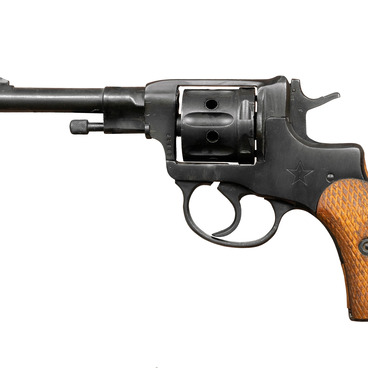The exhibition of the Victory Museum includes the personal possessions of famous military commanders. This cap used to belong to Kirill Afanasievich Meretskov, a Hero of the Soviet Union and one of the first generals of the Great Patriotic War.
Special general ranks were introduced on May 7, 1940. Special uniforms and insignia were introduced for this rank. Generals had three types of clothing: dress, service, and field uniforms.
The dress uniform consisted of an iron-grey dress cap or a papakha (made of sheepskin, with a cap badge and top in the color of trouser stripes), an iron-grey overcoat (with aiguillettes in the color of the service branch, sleeve insignia, and collar patches), an iron-grey dress coat, light-blue trousers worn over shoes for walking out or iron-grey breeches in formation, black leather boots or shoes, a brown leather belt with a black sword belt and gilded fittings, gloves and a shashka worn on the belt.
The service uniform included an everyday khaki-colored cap (or a papakha in winter), an everyday overcoat, a khaki-colored tunic, light-blue trousers with stripes tucked into boots, and formation equipment (in formation), or a white tunic, and blue trousers with stripes worn over shoes (the walking-out variation).
The field uniform consisted of an everyday cap, an everyday tunic, khaki-colored breeches, an overcoat, boots, gloves, and field equipment. The insignia was placed on the rhomboid collar patches and the sleeves.
Kirill Meretskov was born into a peasant family. As a young man, he worked as an apprentice mechanic. His military career began after the February Revolution of 1917. He became chief of staff of the Red Guard militia in the town of Sudogda. The active 20-year-old man helped to establish Soviet power. During the Russian Civil War, Meretskov held various command positions and worked in a staff office. After graduating from the military academy, he fought on the Eastern, Southern, and Western Fronts. Meretskov was badly wounded on three occasions. In 1936, he was appointed military adviser in Spain.
During the Great Patriotic War, Kirill Meretskov commanded an army near Leningrad and recaptured Tikhvin. After the victory at Tikhvin, he was appointed commander of the Volkhov Front. In January 1943, the Volkhov Front headed by Meretskov broke the siege of Leningrad and linked up with the forces of the Leningrad Front. Later, Meretskov commanded the Karelian front and participated in liberating Norway and destroying the Japanese forces in Manchuria.
Special general ranks were introduced on May 7, 1940. Special uniforms and insignia were introduced for this rank. Generals had three types of clothing: dress, service, and field uniforms.
The dress uniform consisted of an iron-grey dress cap or a papakha (made of sheepskin, with a cap badge and top in the color of trouser stripes), an iron-grey overcoat (with aiguillettes in the color of the service branch, sleeve insignia, and collar patches), an iron-grey dress coat, light-blue trousers worn over shoes for walking out or iron-grey breeches in formation, black leather boots or shoes, a brown leather belt with a black sword belt and gilded fittings, gloves and a shashka worn on the belt.
The service uniform included an everyday khaki-colored cap (or a papakha in winter), an everyday overcoat, a khaki-colored tunic, light-blue trousers with stripes tucked into boots, and formation equipment (in formation), or a white tunic, and blue trousers with stripes worn over shoes (the walking-out variation).
The field uniform consisted of an everyday cap, an everyday tunic, khaki-colored breeches, an overcoat, boots, gloves, and field equipment. The insignia was placed on the rhomboid collar patches and the sleeves.
Kirill Meretskov was born into a peasant family. As a young man, he worked as an apprentice mechanic. His military career began after the February Revolution of 1917. He became chief of staff of the Red Guard militia in the town of Sudogda. The active 20-year-old man helped to establish Soviet power. During the Russian Civil War, Meretskov held various command positions and worked in a staff office. After graduating from the military academy, he fought on the Eastern, Southern, and Western Fronts. Meretskov was badly wounded on three occasions. In 1936, he was appointed military adviser in Spain.
During the Great Patriotic War, Kirill Meretskov commanded an army near Leningrad and recaptured Tikhvin. After the victory at Tikhvin, he was appointed commander of the Volkhov Front. In January 1943, the Volkhov Front headed by Meretskov broke the siege of Leningrad and linked up with the forces of the Leningrad Front. Later, Meretskov commanded the Karelian front and participated in liberating Norway and destroying the Japanese forces in Manchuria.



